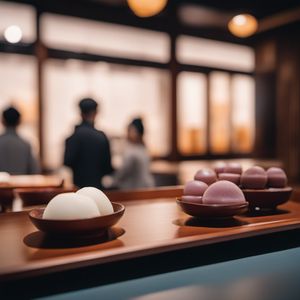
Dish
Amanattō
Candied Beans
Amanattō is made by boiling beans such as azuki or soybeans until they are soft, and then coating them in sugar. The beans are then dried until they are firm and chewy. Amanattō is a low-fat and high-protein snack, but it is high in sugar.
Origins and history
Amanattō has been a popular snack in Japan for centuries, and is often served with tea or as a dessert. The snack is also popular in other countries such as China and Korea. Amanattō is often given as a gift or offered as a religious offering.
Dietary considerations
Amanattō is naturally gluten-free and can be made vegan by using a sugar substitute such as agave nectar or maple syrup. It is suitable for vegetarian and vegan diets. It may contain allergens such as soybeans and nuts.
Variations
Amanattō can be made with different types of beans, such as azuki, soybeans, or black beans, which can affect the texture and flavor of the final product. The snack can also be flavored with different extracts or spices, or mixed with nuts or dried fruit. Amanattō can be served on its own, or used as a topping for ice cream or yogurt.
Presentation and garnishing
Amanattō can be presented in a decorative box or tin to make it a special gift. The snack can be garnished with edible flowers or sesame seeds to add visual interest. Amanattō can also be shaped into different forms, such as hearts or stars, to create a unique presentation.
Tips & Tricks
To prevent the beans from becoming too soft or mushy, make sure to boil them until they are just tender. The beans should be dried in a warm and dry place, such as an oven or dehydrator, until they are firm and chewy. Amanattō should be stored in an airtight container at room temperature to prevent it from becoming too soft or sticky.
Side-dishes
Amanattō is often served with green tea or other light and fragrant teas. It can also be served with sake or other Japanese alcoholic beverages. It is also commonly served with fresh fruit or mochi.
Drink pairings
Amanattō pairs well with green tea or other light and fragrant teas. It can also be served with sake or other Japanese alcoholic beverages.
Delicious Amanattō recipes
More dishes from this category... Browse all »

Aamras
Indian cuisine

Aasmi
Indian cuisine

Agra petha
Indian cuisine

Aiyùbīng
Taiwanese cuisine

Ajdnek
Slovenian cuisine

Akafuku
Japanese cuisine

Akanés
Greek cuisine

Akumaki
Japanese cuisine




